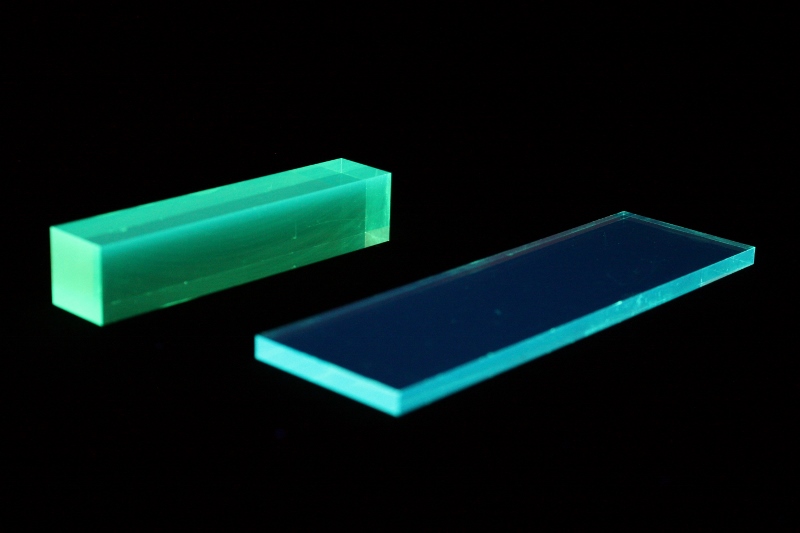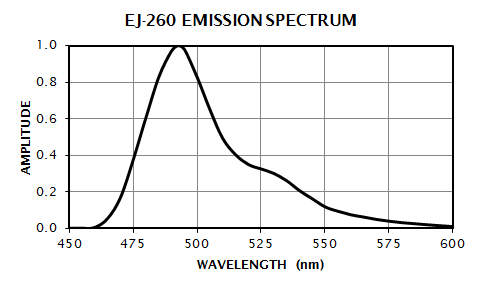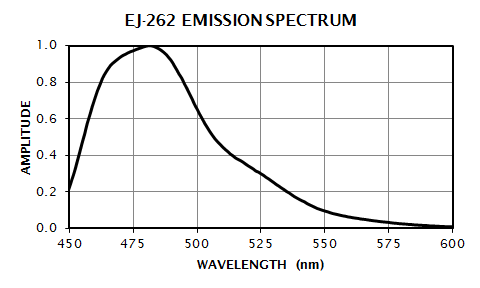GREEN EMITTING
EJ-260, EJ-262

These plastic scintillators have been formulated for use where longer wavelengths are needed for efficient optical coupling to solid-state photosensors. Because of their longer emission wavelengths, they will exhibit somewhat greater radiation hardness than conventional blue plastic scintillators. Both scintillators can be used to detect the same kinds of radiation commonly measured with blue scintillators.
EJ-260 is a green emitting plastic scintillator that has been formulated for use where longer wavelengths are advantageous for purposes of light piping. The green fluorescence is of short enough wavelength and the scintillation efficiency is high enough for successful use with conventional blue sensitive photomultiplier tubes. The light output data presented in the table were determined with a flat response photodetector and would be approximately one half that level for a typical bialkali photomultiplier tube.
EJ-262 is also a green emitting scintillator, but has a faster decay time and a shorter maximum emission wavelength than those of EJ-260. The shorter emission wavelength makes EJ-262 suitable for use with blue sensitive photomultiplier tubes.
| PROPERTIES | EJ-260 |
EJ-262 |
| Light Output (% Anthracene) | 60 | 57 |
| Scintillation Efficiency (photons/1 MeV e-) |
9,200 | 8,700 |
| Wavelength of Maximum Emission (nm) | 490 | 481 |
| Light Attenuation Length (cm) | 350 | 250 |
| Rise Time (ns) | ~1.5 | 0.9 |
| Decay Time (ns) | 9.2 | 2.1 |
| No. of H Atoms per cm3 (x1022) | 5.21 | 5.20 |
| No. of C Atoms per cm3 (x1022) | 4.70 | 4.69 |
| No. of Electrons per cm3 (x1023) | 3.35 | 3.33 |
| Density (g/cm3) | 1.023 | 1.023 |
| Polymer Base | Polyvinyltoluene | |
| Refractive Index | 1.58 | |
| Softening Point | 75°C | |
| Vapor Pressure | Vacuum-compatible | |
| Coefficient of Linear Expansion | 7.8 x 10-5 below 67°C | |
| Light Output vs. Temperature |
At 60°C, L.O. = 95% of that at 20°C
No change from -60°C to 20°C
|
|
| Temperature Range | -60°C to 60°C | |
|
Chemical Compatibility
Attacked by: Aromatic solvents, Chlorinated solvents, Ketones, Solvent bonding cements, etc.
Stable in: Water, Dilute acids and alkalis, Lower alcohols, and Silicone greases.
It is safe to use most epoxies with these scintillators.
|

